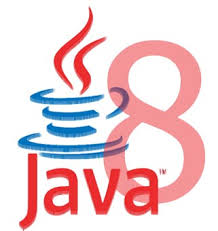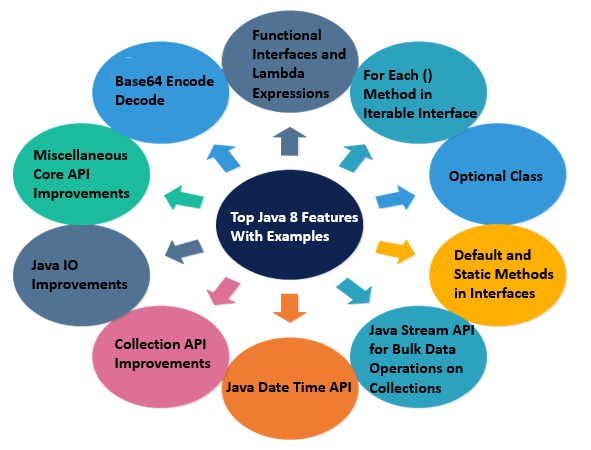What is Java 8?
Java 8 is a major release of the Java programming language and platform, which was officially released by Oracle Corporation in March 2014. It introduced several important features and enhancements to the Java ecosystem, fundamentally changing the way Java developers write code. Some of the key aspects of Java 8 include

Lambda Expressions
Java 8 introduced lambda expressions, which are a concise way to represent anonymous functions. Lambdas make it easier to write code that uses functional programming principles.
Functional Interfaces
Java 8 introduced functional interfaces, which are interfaces that have exactly one abstract method. Functional interfaces are a fundamental concept for working with lambda expressions and functional programming in Java.
Streams API
The Streams API provides a powerful and expressive way to work with collections in Java. It allows developers to perform operations like filtering, mapping, and reducing on collections in a functional and declarative manner.
Default and Static Methods in Interfaces
Java 8 allows interfaces to have default and static methods with implementations. This feature enables backward compatibility for existing interfaces while adding new functionality.
Optional Class
The Optional class was introduced to address the problem of null references. It represents an optional value that may or may not be present, helping to reduce null pointer exceptions.
Date and Time API
Java 8 introduced a modern Date and Time API to replace the outdated and error-prone java.util.Date and java.util.Calendar classes. The new API provides better support for date and time handling.
Nashorn JavaScript Engine
Java 8 included the Nashorn JavaScript engine, which improved JavaScript support within Java applications. It allowed developers to embed and execute JavaScript code seamlessly.
New Concurrency Features
Java 8 introduced new features for concurrent programming, including the CompletableFuture class for asynchronous programming and enhancements to the java.util.concurrent package.
Method References
Method references provide a shorthand notation for invoking methods as lambda expressions or as function pointers.
Other Enhancements
Java 8 also brought various other improvements to the Java platform, such as enhancements to the Collection API, new utility methods in the java.util.Objects class, and improvements in I/O and networking.
Top Java 8 Features With Examples

1.Functional Interfaces and Lambda Expressions
Functional Interface
An interface with a single abstract method.
// Functional interface
// Using a lambda expression
// Result: 5
2.forEach() Method in Iterable Interface
The forEach() method allows concise iteration over collections.
3.Optional Class
The Optional class helps handle null values more gracefully.
// Output: John
4.Default and Static Methods in Interfaces
Interfaces can have method implementations.
5.Java Stream API for Bulk Data Operations on Collections
Streams allow concise manipulation of collections in a functional style.
6.Java Date Time API
The new Date Time API provides improved date and time handling.
// Output: 2023-09-12
7.Collection API Improvements
Enhanced methods like removeIf() and replaceAll() in collections.
8.Java IO Improvements
Introduction of the Files class for improved file manipulation.
9.Miscellaneous Core API Improvements
Enhancements to various core classes and features.
10.Base64 Encode Decode
Java 8 includes built-in support for Base64 encoding and decoding.
These Java 8 features have significantly improved Java’s expressiveness, readability, and ease of use, making it a more modern and powerful programming language.
Conclusion
Java 8 introduced significant features and improvements that have had a profound impact on Java development. These enhancements, including lambda expressions, the Stream API, the Optional class, and the Date Time API, have made Java code more expressive, concise, and efficient.
FAQ’S
1.What are the key benefits of using Lambda Expressions in Java 8?
Lambda expressions in Java 8 simplify the code by reducing verbosity, improving readability, and making it more expressive. They also enable functional programming constructs, such as passing functions as arguments to methods.
2.How does the forEach() method in Java 8 simplify iteration over collections?
The forEach() method allows developers to iterate over collections in a concise and expressive manner. It eliminates the need for explicit loops and enhances code readability.
3.What is the purpose of the Optional class in Java 8, and how does it help with null handling?
The Optional class in Java 8 provides a way to handle null values more gracefully. It helps avoid null pointer exceptions by indicating whether a value is present or absent, allowing safer access to potentially null objects.
4.Can you explain the use of default and static methods in interfaces introduced in Java 8?
Default methods in interfaces allow developers to provide method implementations in interfaces without breaking existing implementations. Static methods in interfaces enable utility methods that can be called on the interface itself.
5.How does the Java Stream API simplify working with collections in Java 8?
The Stream API in Java 8 allows developers to perform bulk data operations on collections in a concise and functional style. It enables operations like filtering, mapping, and reducing, making code more expressive and efficient.

